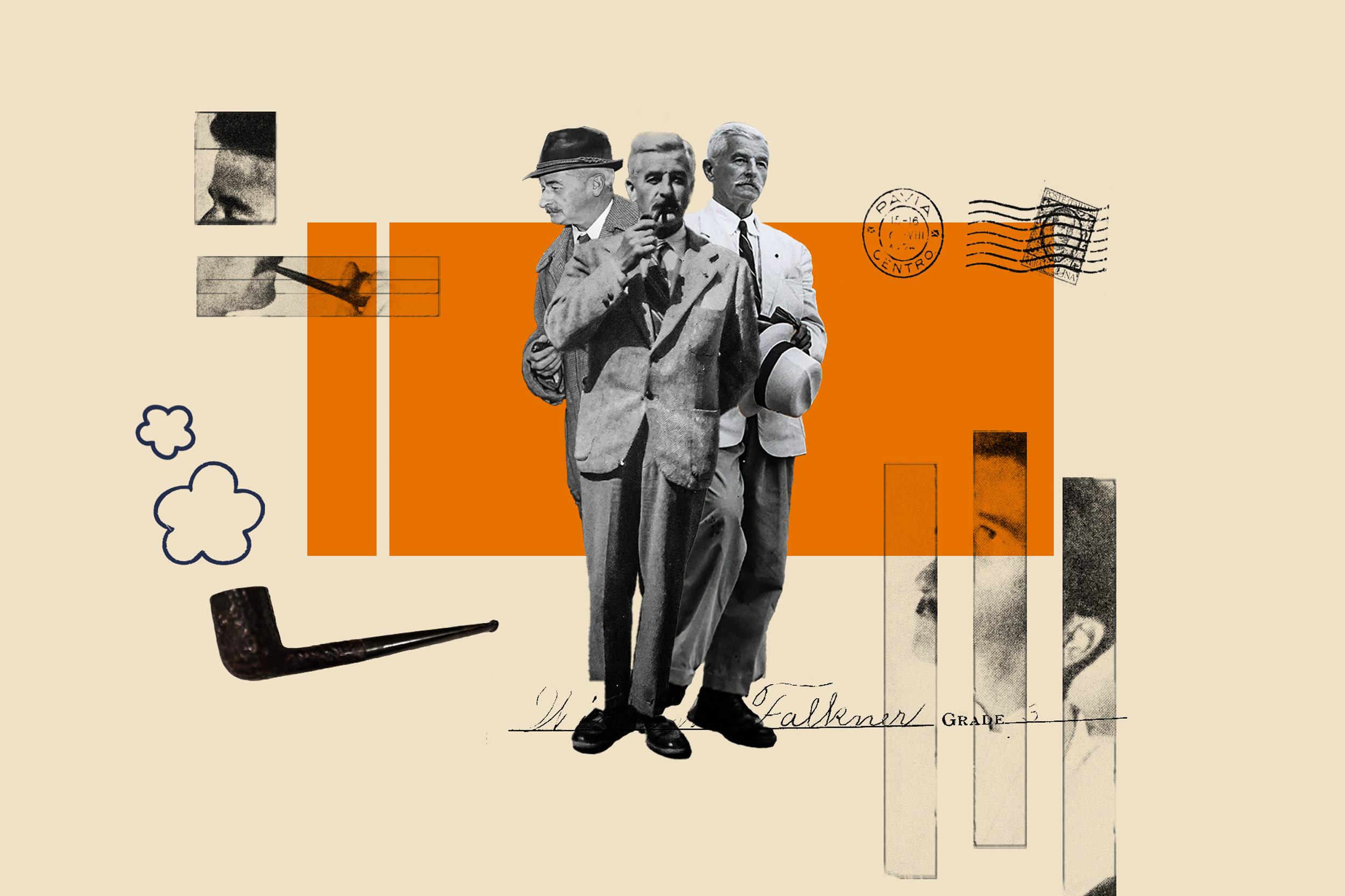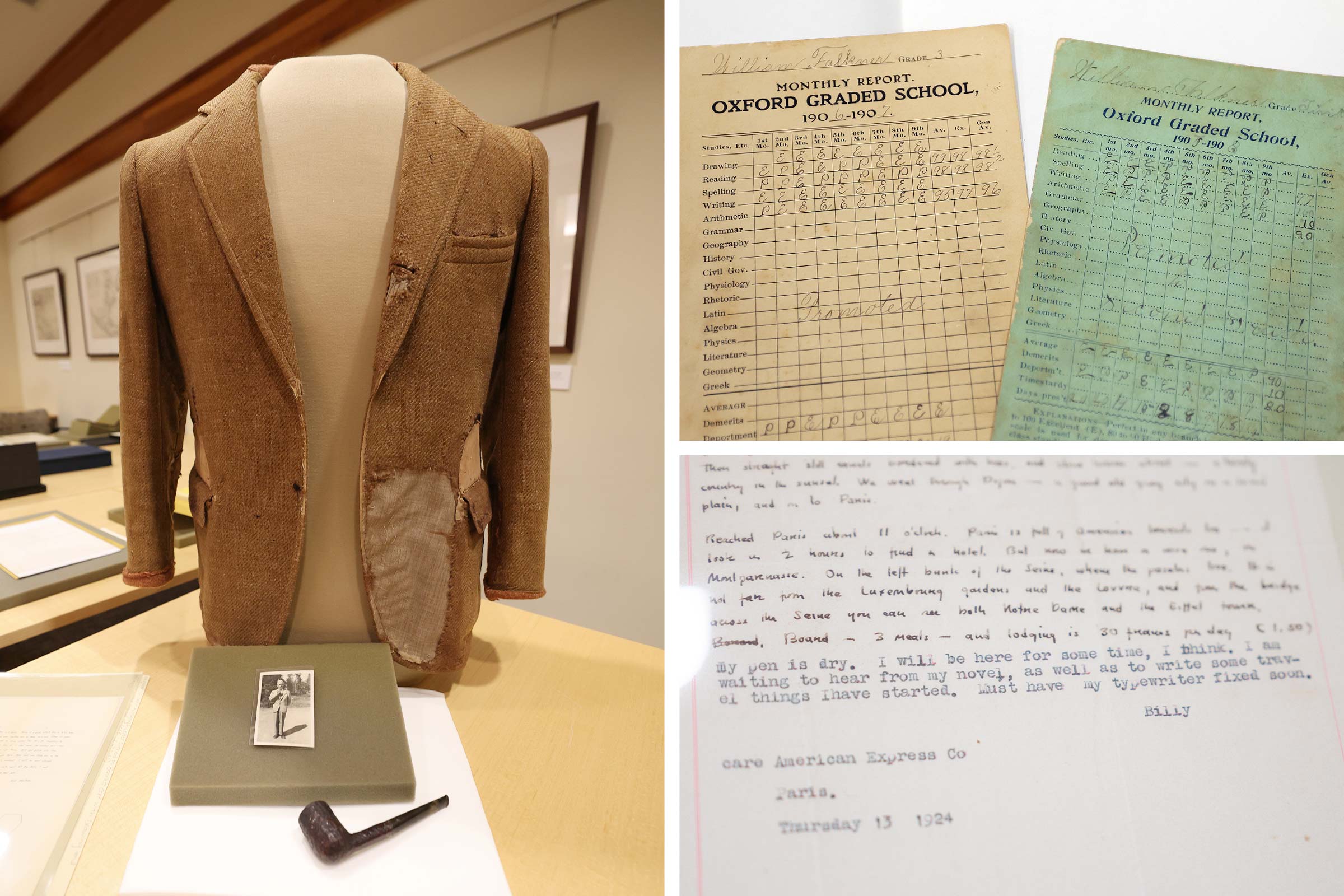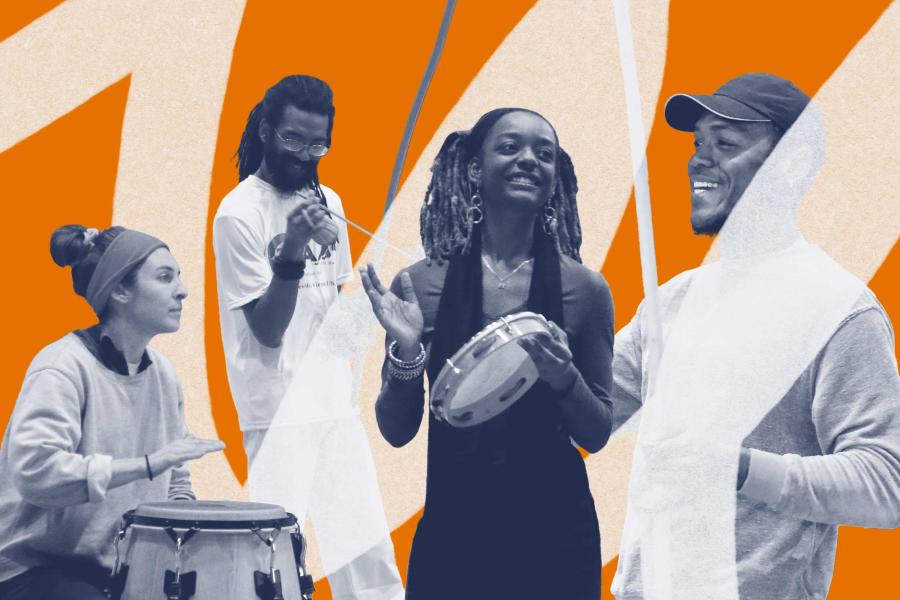In his letters, Billy Falkner was a sweet and dutiful son, writing about how much money he spent on food and wine in Paris, the city’s perpetually gray weather and the friends he made in the Luxembourg Garden.
The correspondence also provides a glimpse of the man the world knows better as William Faulkner, the Nobel Prize-winning author and the University of Virginia’s first writer-in-residence. Last spring, UVA acquired 16 letters from Faulkner to his mother written while he traveled through Europe in the fall of 1925. The collection is widely considered to be the largest and most important group of correspondence by the author to become available on the market in decades.
“The letters are significant because they document his writing practice at a formative time in his career. They also include two wonderful self-portrait sketches,” said Yuki Hibben, curator of print culture at the Albert and Shirley Small Special Collections Library, who acquired the letters. “He’s traveling for the first time in Europe, befriending artists and growing a beard, but he sets aside time to work. He’s a very disciplined and ambitious young writer.”










